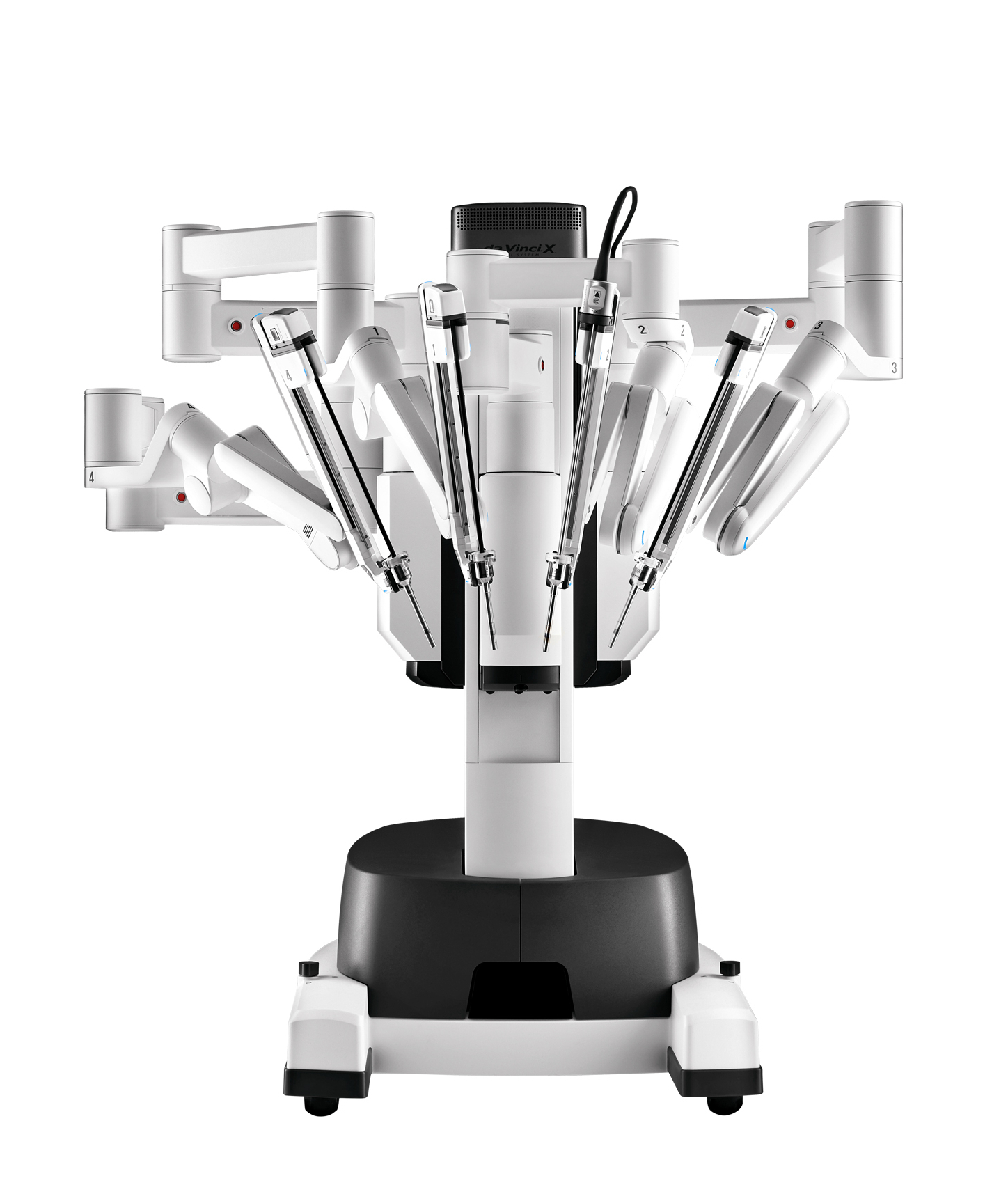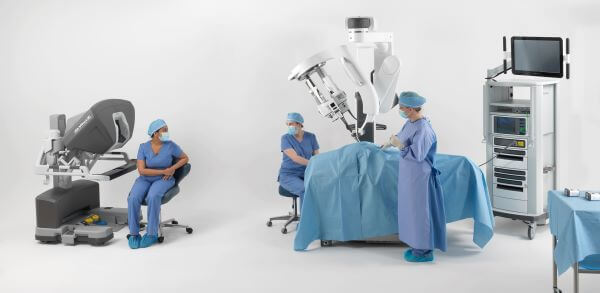History in motion
Madison Hospital made history last week by performing its first robotic-assisted surgeries.
On Feb. 21, OBGYN Dr. Mark Purvis and a team of Madison surgical nurses and surgical assistants completed two minimally-invasive hysterectomies using the hospital’s new da Vinci Xi robotic surgery system.
“This is the culmination of months of planning and hard work by our OR team led by Director of Surgical Services Kate Marquez and Operating Room Manager Eboni Grier,” said Madison Hospital President Mary Lynne Wright. “We are absolutely thrilled that Madison residents can now enjoy the benefits of robotic surgery closer to home.”
For the time being, Madison’s robotic surgery program will focus on hysterectomies. But the goal is to add more robot-assisted procedures in the coming months, including gall bladder removal and inguinal hernia repair.
Madison becomes the fifth HH Health System facility to offer robotic surgery with the latest-generation da Vinci Xi system, joining Huntsville Hospital, Huntsville Hospital for Women & Children, Decatur Morgan Hospital and Helen Keller Hospital.
Like Madison, Huntsville Hospital's now 15-year-old robotic surgery program offered a single type of procedure at the start: prostate removal. But the program quickly expanded beyond urology and now also includes gynecologic, oncologic, thoracic, orthopedic, spine, colorectal and general surgery procedures.
Da Vinci is just one of HH Health System’s robotic surgery platforms. The others are Mazor X for spine procedures; and MAKOplasty and VELYS for knee and hip replacement. Last year, Health System surgeons in Madison County performed more than 1,600 operations using surgical robots.
Dr. Purvis, who practices at OBGYN Associates, is the first Madison Hospital physician approved to operate with the da Vinci Xi system. Dr. Douglas Downey, a general surgeon with HH Valley Surgical Associates in Madison, is going through the approval process now and said he expects to begin using the robot in April.
During a da Vinci robotic surgery, the surgeon is seated at a console which gives them control of the surgical instruments. With 3D high-definition views, da Vinci provides a crystal clear image of the surgical area that is magnified 10 times to what the human eye sees. The surgeon uses tiny instruments that move like a human hand but with a far greater range of motion. Meanwhile, tremor-filtration technology helps the surgeon move each instrument with smooth precision.
For patients, the potential benefits of robotic-assisted surgery include smaller incisions with less pain and scarring, lower risk of infection, a shorter hospital stay and faster recovery.

